Introduction
Imagine a game where each piece you control has its own set of moves, strengths, and limitations. A game where every move can be a step toward victory or a misstep that leads to defeat. Chess is that game—a dance of strategy, foresight, and precision. But to truly understand and master chess, you first need to familiarize yourself with the chess pieces, their moves, and how they interact on the board. In this guide, you’ll uncover the power behind each chess piece and how understanding their moves can take your game to new heights. Ready to turn your pawns into warriors and lead your king to victory?
Table of Contents
Understanding the Basics of Chess Pieces
Before diving into chess piece names or chess pieces moves individually, it’s important to grasp the unique role every piece plays within the bigger game. Chess has six unique chess pieces: the Pawn, Rook, Knight, Bishop, Queen, and King. Each one has its own way of moving and attacking, making them both essential and unique on the board. Mastering the basics of each piece will give you the foundation you need to make strategic decisions and anticipate your opponent’s moves.
Chess Piece Breakdown: Moves, Strategies, and Tips for Each Piece

Pawns – The Foot Soldiers of Chess:
At first glance, pawns might seem limited. They move forward one square at a time, with the option of advancing two squares on their first move. However, pawns can capture diagonally, adding a layer of complexity to their movement. Despite their simplicity, pawns play a crucial role in controlling the board and setting up attacks or defenses.
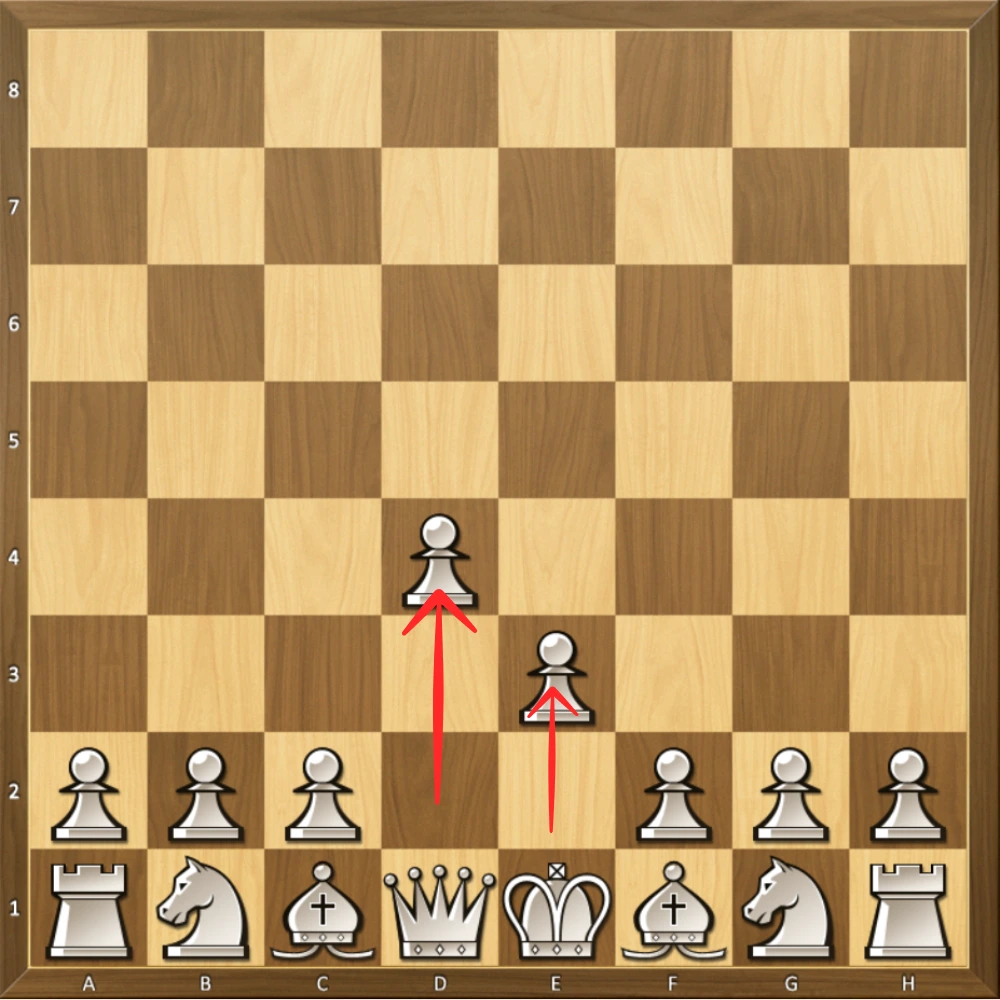
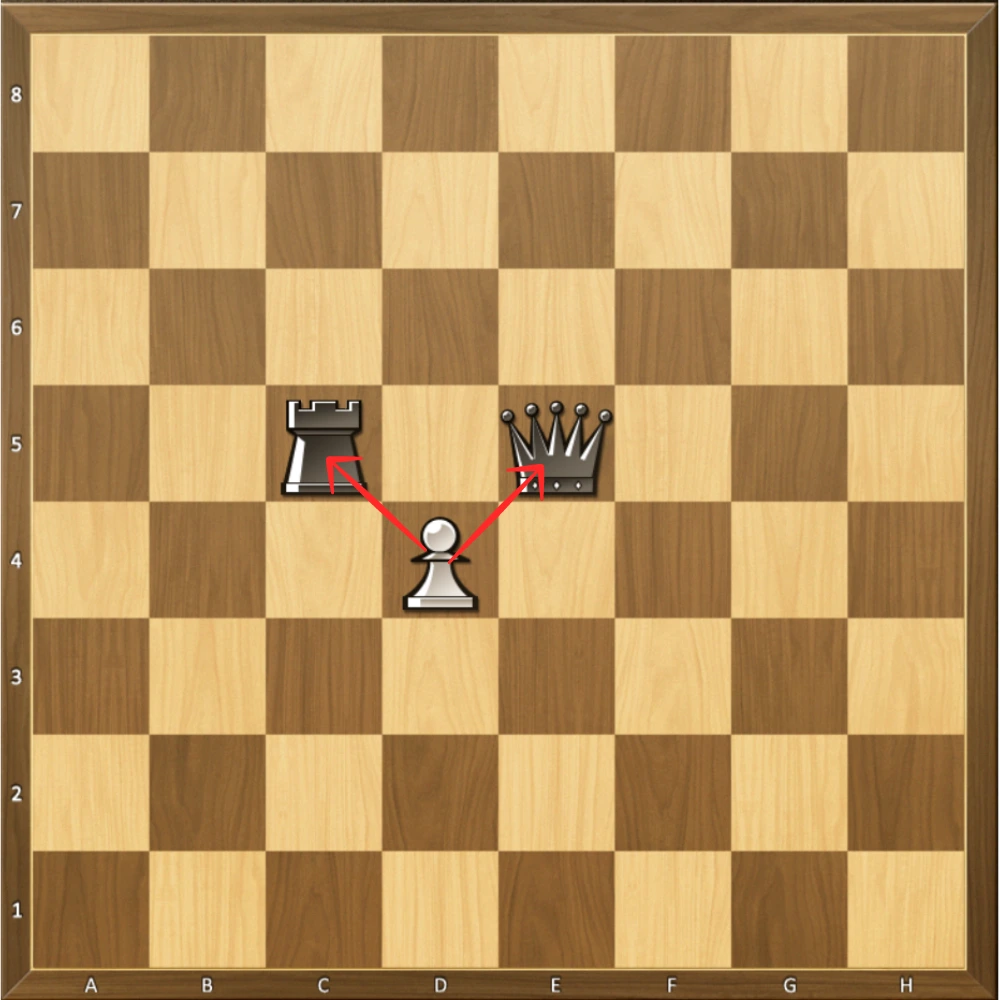
- Strategy Tip: Use your pawns to control the board’s center, as this area provides you with the most strategic advantages. Pawns can also be sacrificed to open paths for more powerful chess pieces or to pressure your opponent’s defenses.
- Pawn Promotions: When a pawn reaches the last row, it can be promoted to any piece (excluding the king). Most players choose a queen due to its power, but in certain scenarios, opting for a knight can be a game-changing move.
Table: Pawn Moves and Promotions
| Move | Description |
|---|---|
| One square | Move forward one square |
| Two squares | Only on first move |
| Diagonal capture | Capture diagonally in any forward direction |
| Promotion | Reaches last row, promotes to a more powerful piece |

Knights – The Unpredictable Warriors:
Knights are unique in that they move in an “L” shape, allowing them to jump over other the chess pieces. This ability makes them especially valuable in crowded board positions. Knights can be unpredictable and challenging for beginners to master, but their power lies in their flexibility and ability to control central squares.
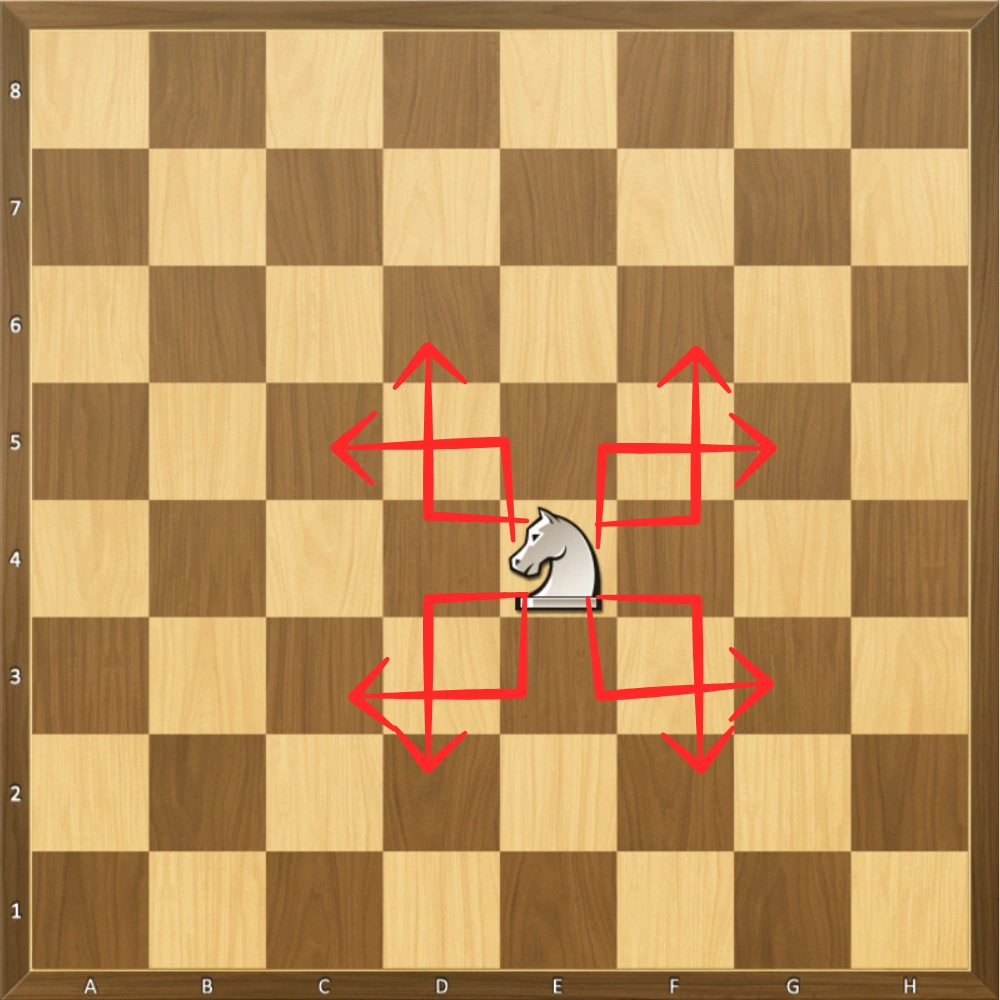
- Strategy Tip: Positioning knights in the center maximizes their range, allowing them to exert influence over eight different squares. Knights are particularly useful for “forks,” where one knight move can threaten multiple opponent pieces simultaneously.
- Why the Knight is Unique: Unlike other pieces that move in straight lines, the knight’s movement pattern is unlike any other, making it a formidable tool in any strategic setup.
Table: Optimal Positions for Knights on the Board
| Position | Impact |
|---|---|
| Center | Controls eight squares |
| Edge | Limits movement |

Bishops – The Diagonal Dominators:
Bishops have unlimited range across the board but can only move diagonally. Having one bishop on light squares and another on dark squares means that they can work together to control a wide range of territory. Bishops are powerful in open games where diagonal paths are unobstructed.

- Strategy Tip: Work with both bishops to cover more board areas effectively. This “bishop pair” is particularly advantageous in mid-to-late stages of the game, providing strong control over open diagonals.
- Bishops vs. Knights: While bishops excel in open games, knights are better in closed positions with limited movement options. Understanding when to deploy each piece is critical to game success.
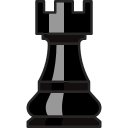
Rooks – The Strongholds of the Board:
Rooks are powerful pieces that can move any number of squares vertically or horizontally, making them ideal for controlling files (columns) and ranks (rows). They’re especially powerful when positioned on open or semi-open files, as they can dominate the board’s length.

- Strategy Tip: Place your rooks on open files or double them up on one file for a more impactful attack. This setup creates strong offensive potential, often placing pressure on your opponent’s defenses.
- Endgame Power: Rooks are invaluable in the endgame when fewer pieces are left on the board, giving them more freedom to move and attack.

Queen – The Most Powerful Piece:
The queen combines the powers of the rook and bishop, moving any number of squares vertically, horizontally, or diagonally. This versatility makes her the most potent and flexible piece on the board. However, early deployment of the queen can expose her to attacks, so timing is critical.
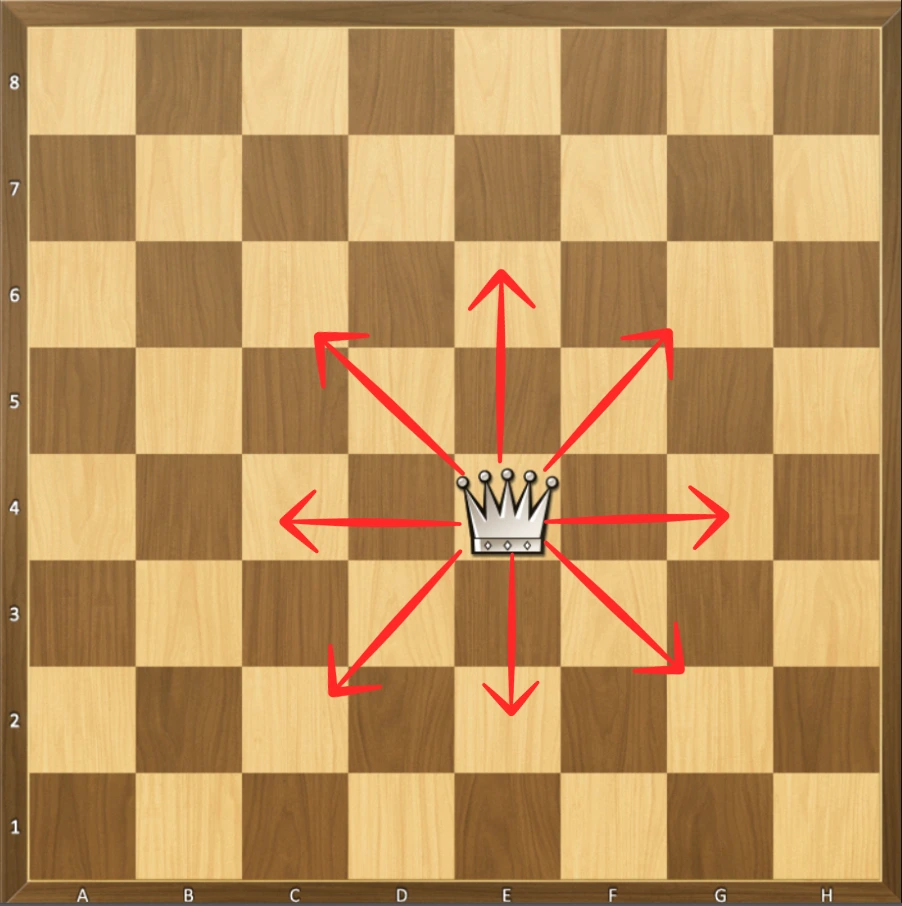
- Strategy Tip: Avoid bringing your queen into play too early, as this can make her vulnerable to attacks from lesser pieces. Instead, use her for calculated attacks and checkmates later in the game.
- Queen Sacrifice: Occasionally, sacrificing the queen can lead to an advantageous position, even though it may seem counterintuitive. Skilled players recognize when giving up the queen can open pathways for a winning strategy.

King chess piece – The Objective and the Protector:
The king chess piece is the most crucial piece in chess, though it has limited mobility, moving just one square in any direction. The primary objective in chess is to protect your king while trying to put your opponent’s king in “checkmate,” where it cannot escape capture.
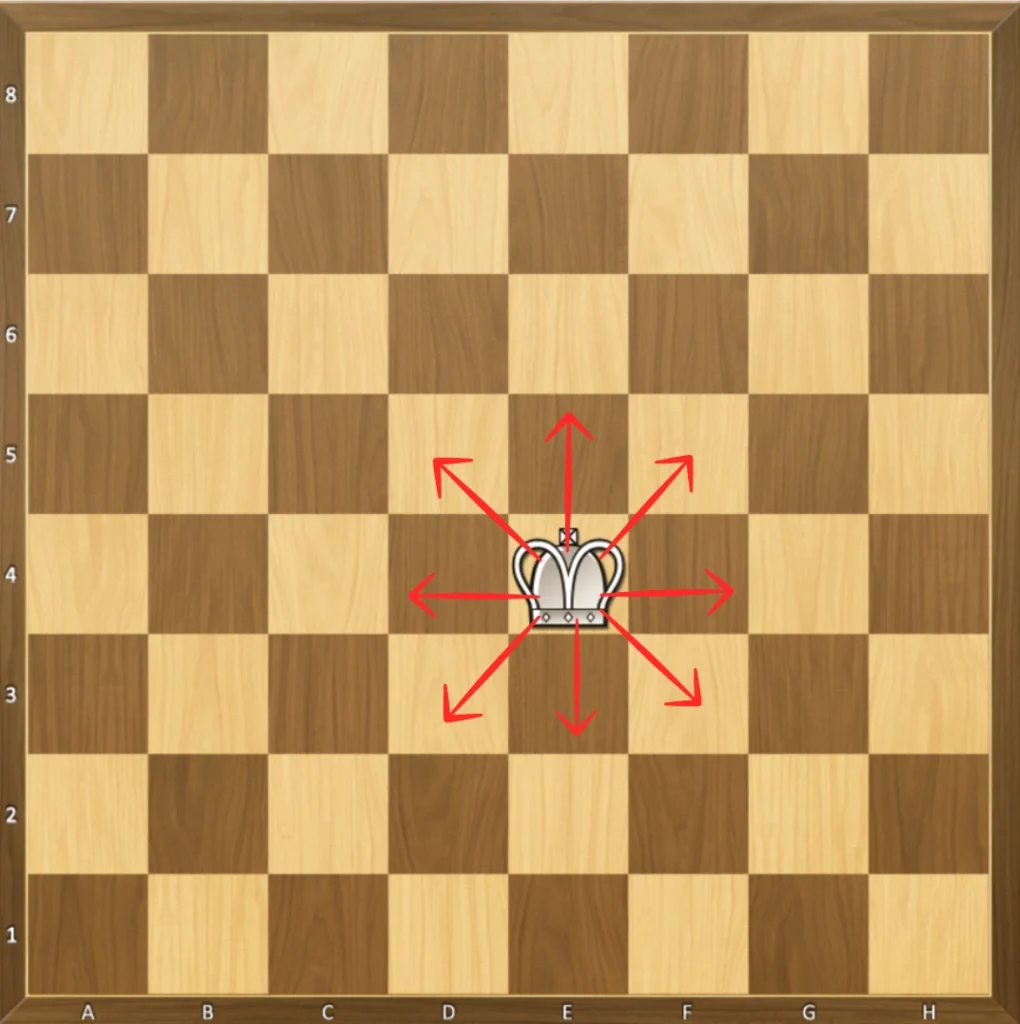
- Strategy Tip: Ensure your king’s safety, especially in the early and mid-game, often through castling—a move that safeguards the king and activates a rook. In the endgame, the king becomes an offensive piece, working with pawns and rooks to secure a checkmate.
Table: King’s Role and Movement Limitations in Different Game Phases.
CASTLING:
Castling is a special move where the king moves two squares toward a rook, and the rook jumps over the king to the square next to it. This can only be done if neither the king nor rook has moved before, there are no pieces between them, and the king isn’t in or passing through check. Castling helps protect the king and activates the rook for future play .
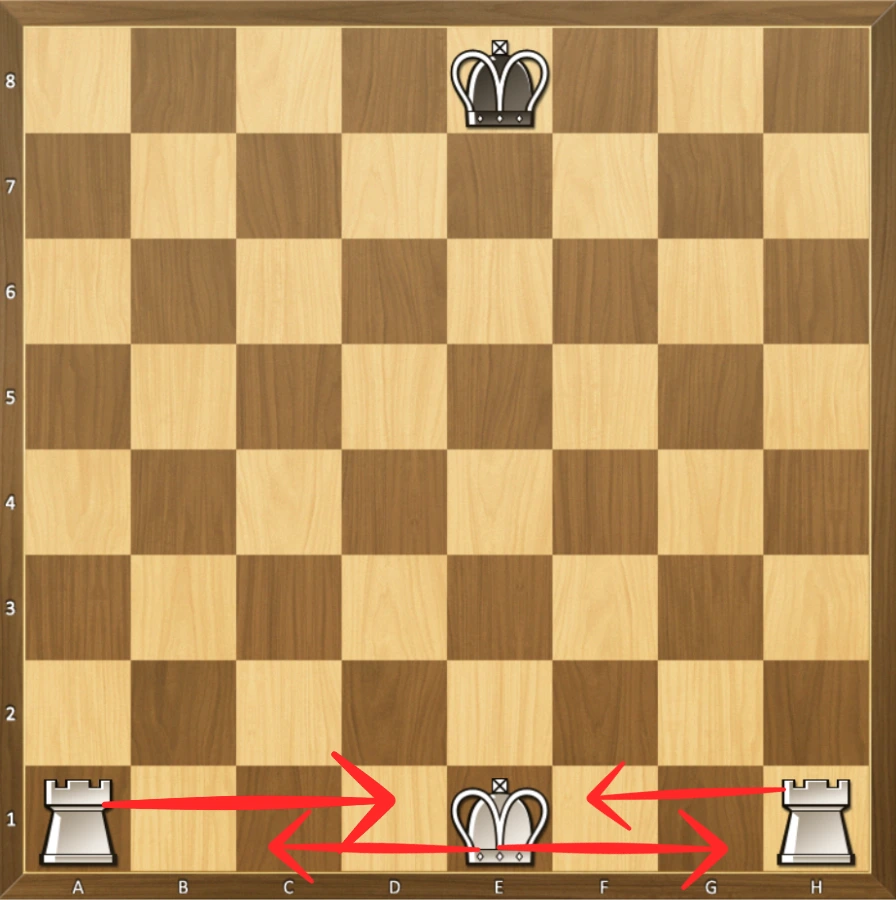
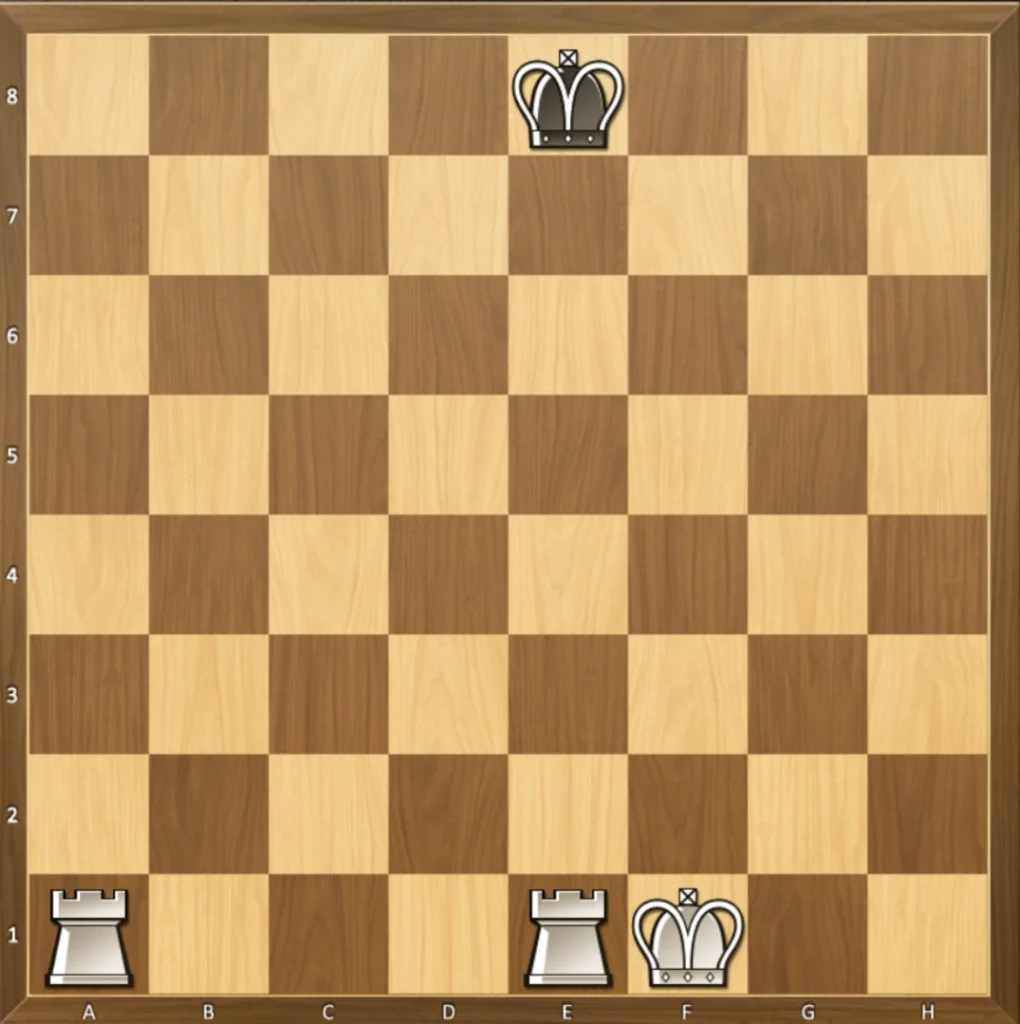
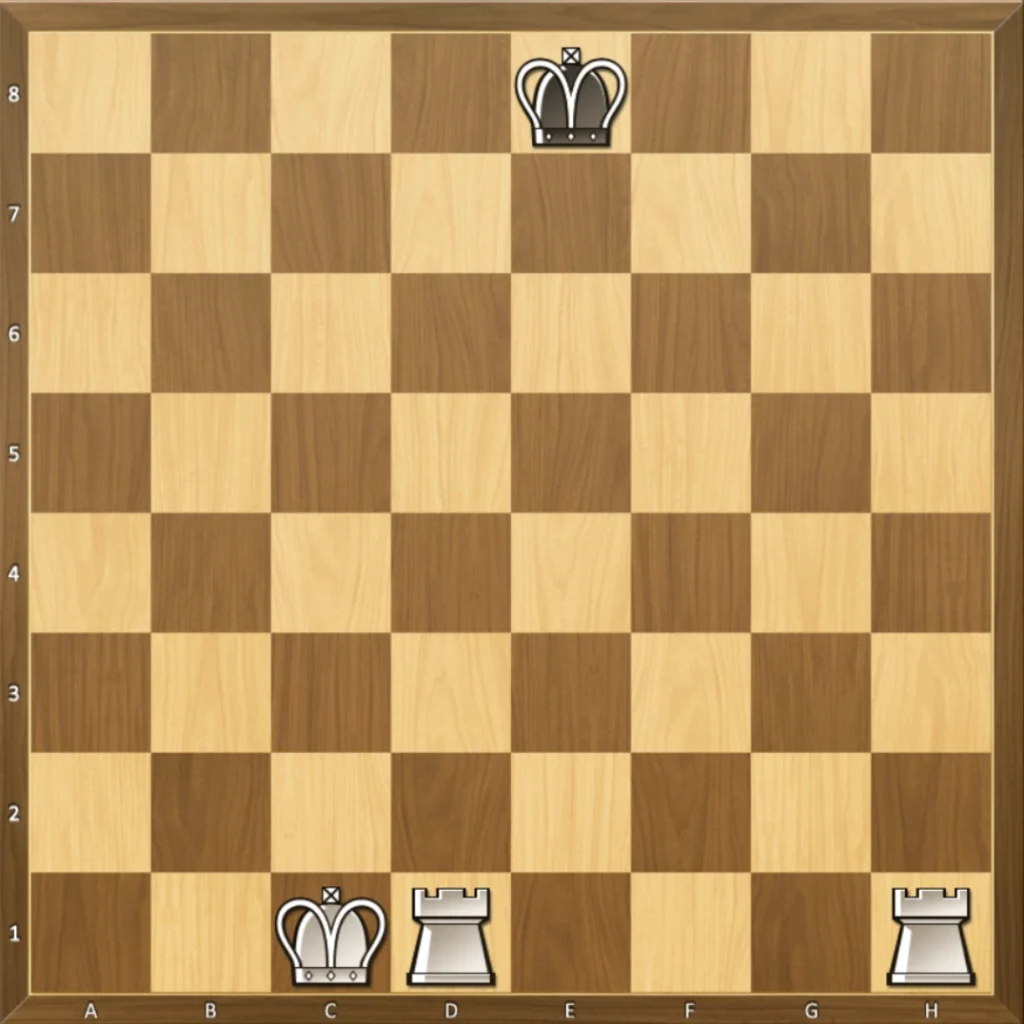
| Phase | Role | Movement Notes |
|---|---|---|
| Early Game | Protected | Minimal movement; keep safe |
| Endgame | Aggressive | Can help control the board |
Combining Moves – Strategic Tips for Effective Play
Piece Coordination and Positioning
Mastery in chess lies in learning how to coordinate your pieces. While each piece has unique abilities, the true power emerges when you align multiple pieces toward a single goal—whether that’s attacking, defending, or gaining control over key squares.
- Center Control: The center is the heart of the board, offering both offensive and defensive advantages. Positioning your pawns and chess pieces in the center allows for more control and flexibility across the game.
- Exploiting Open Spaces: Look for opportunities to place rooks and bishops on open files and diagonals, which maximize their range and threaten opponent chess pieces from a distance.
- Endgame Focus: In the endgame, use your rooks, bishops, and pawns effectively. For instance, advanced pawns in the endgame can force your opponent to make defensive moves, giving you a strategic advantage.
Frequently Asked Questions about Chess Pieces
What are the best strategies for using each chess piece?
Each piece has unique strengths. Pawns control space, knights and bishops control territory, and rooks and the queen provide powerful attacks. Positioning your chess pieces strategically can often be more valuable than capturing opponent pieces.
How does the pawn’s promotion work?
When a pawn reaches the last row, it can promote to a stronger piece, typically a queen. Promotion choices vary depending on game needs; sometimes a knight is ideal for complex moves.
How can you best safeguard your king?
Protecting the king is paramount, especially in the early game. Castling is a common move that safeguards the king and positions a rook in a more active role.
What makes the queen the most powerful piece on the board?
The queen’s ability to move any number of squares in multiple directions—vertically, horizontally, or diagonally—gives her unparalleled range and flexibility, making her a formidable asset.
Is it possible to win a game with just a few chess pieces?
Absolutely. In fact, endgames often involve few chess pieces, and knowing how to maneuver them effectively is key to securing a win.
Conclusion
Becoming skilled at chess is about more than knowing the chess piece names or just learning the rules; it’s about understanding the nuanced roles each piece plays in the game. By mastering each piece’s moves and strategies, you’ll gain the confidence and insight to think ahead and anticipate your opponent’s moves. Whether you’re moving a pawn to establish control or maneuvering a queen for a game-winning attack, each decision brings you one step closer to victory. So, as you continue to practice and refine your skills.




